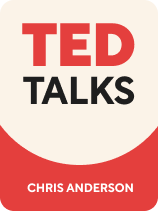

This article is an excerpt from the Shortform book guide to "TED Talks" by Chris Anderson. Shortform has the world's best summaries and analyses of books you should be reading.
Like this article? Sign up for a free trial here .
Do you have an important speech coming up? What are some things you need to consider when planning your speech?
According to Chris Anderson, all effective speeches begin with an idea, and they come alive with a throughline. So first, you’ll need to determine what your speech will be about—your idea. Then you’ll need to decide what message you want your audience to take with them—your throughline.
In this article, you’ll learn how to plan an effective speech and keep your audience on track from start to finish.
The Idea
Anderson says that too often, people believe their idea must be “big” to be worthy of a speech, and this simply isn’t true. Some ideas are big—for example, an invention that will save lives, or a civil rights issue that will affect future generations. But other ideas are subtle, like an observation about human behavior or a juxtaposition of landscapes.
For example, remember a time when your thinking was shifted, or you were delighted and entertained. Often, subtle ideas spark these life-changing moments. Both big and subtle ideas have the potential to influence or move an audience.
The Throughline
Once you have an idea, Anderson says the next step is to determine your throughline, or the point of your speech. So if your idea is, “I want to talk about my trip to Alaska and how the Inuits live,” an example of a throughline would be, “People who live in small, self-sufficient communities live more creatively than people in big cities.”
Anderson says you should be able to express your throughline in one sentence. By thinking of it in such concise terms, you’re more likely to stay on track. Imagine this throughline as a connecting thread that’s woven in and out of your speech from beginning to end. When this is done well, the audience remains engaged.
Avoid predictable throughlines. Anderson says an element of surprise ensures your audience’s curiosity from the beginning. For example, which speech sounds more interesting: The Dangers of Procrastination or The Benefits of Procrastination?
Some examples of effective throughlines include:
- Having willpower isn’t enough to break a habit.
- Showing weakness is the strongest action you can take.
- Limiting screen time can damage your child.
Note that each of these is one sentence, contains a lesson, and has a surprising approach.
| How to Give an Effective Speech: Keep Your Audience on Track Anderson says that a throughline ensures your audience will stay with you from start to finish. Additional strategies to keep your listeners’ attention include: – Use transition words and phrases to let them know where in the speech you are. “It began with…” “After that, I…” and “Finally, I learned…” all help your listeners follow the rhythm of your talk. – Avoid jargon. A sentence or two of incomprehensible language is enough to lose your audience’s attention. Use words that everyone can understand. – Use analogies and stories to explain the more complicated parts of your speech. They give your audience a break from concentrating and are enjoyable. – Make the conclusion clear and connect it back to your main point (throughline). An abrupt end is jarring to the audience, so design your last handful of sentences to signal that the speech is coming to a close. |
The Difference Between a Topic and a Throughline
Anderson makes a clear distinction between topics and throughlines. A topic is what your speech is about, but the throughline is the lesson. A topic is also circumstantial, while the throughline is universal. Think of the topic as the tool you use to illustrate your throughline.
Whoever asks you to speak might assign the topic or the throughline, but Anderson says it’s rare to be given both. For example, you might be asked to speak at a conference on the topic of your new invention, but the throughline is yours to develop. Or, you might be asked to speak to your company about the benefits of collaboration, but how you illustrate that message (your topic) is your choice.
(Shortform note: In Talk Like TED, Carmine Gallo recommends incorporating a “shocking moment” into your presentation. This can include an unbelievable statistic, a startling photo, a surprising story, and so on. He says that this shocking moment should drive home the message of your speech—or, in Anderson’s terms, your throughline.)
Avoid These Speech Styles
Now that you have an idea and throughline, you’re almost ready to start planning your speech. Before you do, however, Anderson warns of four ineffective speech styles to steer clear of, which we have titled: The Advertisement, The Never-Ending Ramble, The Pat on the Back, and The Performance.
The Advertisement
What it is: In this kind of speech, the speaker isn’t aiming to give something to the audience (for example, an insight, invention, or new knowledge). Rather, Anderson says the speaker is seeking to take. He’s either trying to sell a product, his own services, or convince the audience to take an action that benefits him.
Why it doesn’t work: Anderson warns that when an audience senses that they’re the targets of an advertisement, they instantly become wary. The speaker is unlikely to yield sales this way, and he also risks damaging his reputation.
The remedy: Anderson says even if your goal is to sell something, you should always seek to give. Instead of plugging yourself, focus on communicating your ideas. For example, if you’re a life coach and you’re hoping to secure new clients, don’t center your speech around your services or achievements. Instead, show the audience an important way they can improve their lives and let them come to you for more.
(Shortform note: To avoid sounding like a salesperson when you really are trying to sell something, one strategy is to focus on problems and solutions rather than products. Think of three distinct problems that your company solved for clients recently. How can you tell these as entertaining stories? Is there a connecting theme to tie them all together? You now have a sales pitch that doesn’t feel like a sales pitch.)
The Never-Ending Ramble
What it is: In this type of speech, the speaker doesn’t have a plan and tries to wing it. Anderson says this method is fairly common among confident speakers, but often results in a rambling, incoherent speech. At worst, the speech flops. At best, it isn’t as effective as it could be.
Why it doesn’t work: Anderson says that showing up to a speaking engagement unprepared is insulting to the audience. If the audience knows you haven’t put any time or thought into what you’re presenting, you come across as arrogant, and they’re unlikely to take away anything of value.
The remedy: If you prefer to speak in the moment, Anderson says you don’t have to script your speech. However, you should know what your throughline is, all of the major points you want to cover, and how to execute the speech within a given time limit. (Shortform note: Part 5 of this guide discusses how to successfully deliver an unscripted speech.)
The Pat on the Back
What it is: In this speech style, Anderson says the speaker spends her time talking about her company, her colleagues, and their accomplishments. This can take the form of bragging, or as a long list of “thank yous.” In both cases, it bores the audience.
Why it doesn’t work: The audience gains nothing from listening to the details of your organization or the names of those who contributed. Anderson sympathizes with the desire to recognize your hard-working team, but speeches should be in service of the audience.
The remedy: Anderson advises focusing on the work you’re doing, not on who is doing the work. If you must thank someone in your speech, do it succinctly and get back to the big idea.
(Shortform note: One way to acknowledge your team without drawing attention away from your ideas is to show photos of them working on the project as slides in the background of your presentation. In Part 5 of this guide, we discuss the book’s recommendations for visual aids, such as using photos that show action, rather than portraits.)
The Performance
What it is: In this style, the speaker goes on stage with the goal of a standing ovation or moment in the spotlight. Anderson says this speaker will milk the audience for applause by pausing dramatically or gesturing with outstretched arms.
Why it doesn’t work: Anderson says if you’re desperate to be inspirational, the audience can sense it and will pull back. You can’t be inspirational just because you want to be; it’s a badge of honor earned through intense dedication and legitimate passion.
The remedy: Anderson says to opt for substance over style. Wait until you have something worthwhile to say before stepping on the stage—even if you’re a born speaker.
(Shortform note: Joel Schwartzberg, a professional presentation coach, says that writing a script in itself sets you up for this performance scenario. Rather than focusing on the ideas we want to communicate, when we write a speech we often focus instead on the words we’re choosing, and whether they’re impressive or eloquent enough. He believes that by writing notes instead of a script, the words you say will be more appropriate and less pretentious.)

———End of Preview———
Like what you just read? Read the rest of the world's best book summary and analysis of Chris Anderson's "TED Talks" at Shortform .
Here's what you'll find in our full TED Talks summary :
- A nuts-and-bolts guide to public speaking that takes you from the initial idea to your final bow
- TED curator Chris Anderson's public speaking advice on everything from scripting to wardrobe
- A comparison of Anderson's advice to that of other public speaking experts






